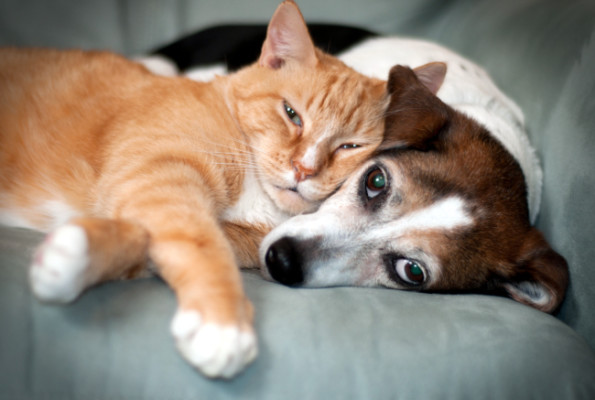Five interestings facts about the way dog sleeps

How long do dogs sleep?
On average, dogs sleep between 8 and 12/14 hours a day, but one needs to consider factors such as age, breed, and lifestyle. Whereas puppies and old dogs can sleep even up to 20 hours a day, breeds like Great Danes and Newfoundland dogs sleep up to 18 hours. On the other hand, working dogs recover their energy faster and therefore sleep less.Four-legged dreams
In all likelihood, dogs dream about their owners, perhaps while they’re doing something together, as can be assumed also by observing them when they sleep. If you see your dog move its paws, it’s probably dreaming about going for a walk with you. If instead it moves its mouth, your pet is probably dreaming that you are feeding it. Puppies sleep more, so they have longer REM phases and consequently also dream more than adult dogs, which don’t store up as much information in their memory while they’re asleep.Learning during a nap
As we just mentioned, dogs use naps as a way to store information about what they experienced throughout the day, much like their human owners do. And just like humans, sleeping well is essential for their brains to function properly. Did you know that this form of 'nocturnal learning' is more developed in female dogs?Dogs may experience sleep disorders
Do you snore when you sleep, or do you have some minor issues managing your sleep? The same thing can happen to dogs: other examples of sleep disorders that typically affect this animal are narcolepsy or brachycephalic airway syndrome (especially in flat-faced dogs). This condition obstructs the dog’s airways, so keep an eye on your pet’s breathing to monitor its regularity, both when it’s awake and asleep.To every position its own personality
Not all dogs sleep the same way and a person can distinguish some of their character traits based on the position they assume when they’re asleep. A dog that curls up with its paws tucked under its body and its face and tail that try to make contact usually tend to be gentle and cuddly. Dogs that sleep on their stomach with all four paws stretched out, instead, tend to be playful and full of energy. Several other positions indicate whether a dog feels comfortable and safe in any given environment. Dogs that sleep on their back or side feel protected and are not afraid to assume a more vulnerable position when they sleep. And if you’ve ever caught your dog with its stomach facing upward and its hind paws raised, as if resting against a wall or couch, don’t worry. It simply wants to cool down faster, like on an especially hot day or after an intense playtime session! Now that you know more about how your dog sleeps, make sure you provide it with the best sleeping products. Visit the Magniflex website and explore the range of top-quality mats and kennels of our Pet line!
Posted in:

